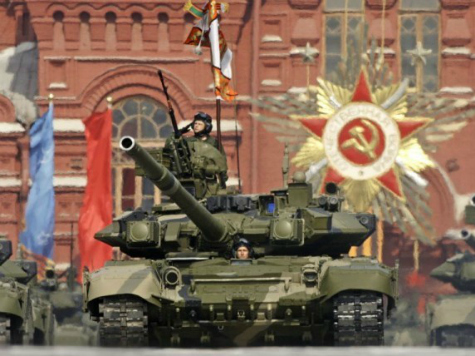
Russia’s military annexation of the Crimea and buildup of land and air forces on its borders with Eastern Europe is raising anxiety that Russia will militarily intervene in other former “republics” to rebuild the Soviet Union.
Ukrainian tanks and special-forces have surrounded break-away Eastern Ukrainian cities and have set a deadline for pro-Russian protestors and paramilitary forces to surrender by April 13th or face a military retaliation. Stratfor Global Intelligence believes Russia is adhering to a “rigorous calculus and constraint-based strategy” in a game to destabilize NATO defenses as a key strategy to rebuild a Russian empire.
Mark Twain famously said: “History does not repeat itself, but it does rhyme.” Twain meant that although history does not exactly repeat the same events, it repeats the same themes. Russia’s greatest defense has been the “space” from its borders an invader would have to cross to reach Moscow. This explains why Russia has not been conquered since the Mongols in the 14th Century. Although they have been in wars with almost every nation in Europe and even lost some, the country eventually has reemerged as the largest, most populated, and most powerful nation in Europe.
With Ukraine’s border less than 300 miles from Moscow, Russia could never allow Ukraine to become an ally or member of NATO with its customary army bases, air fields, and missiles batteries. After the west-championed revolution overturned the non-aligned government and the new Ukraine leaders talked about NATO membership, Russia provoked a counter-rebellion, then militarily intervened and annexed the Crimea.
Russia’s actions in Crimea follow a 25 year pattern of organizing protests by ethnic Russian and pro-Russia political movements as a plausible justification for military intervention. According to Stratfor, this strategy has allowed Russia to:
…lay the political groundwork for a potential intervention while testing the local and foreign responses before the actual intervention takes place. The consistent goal of each of these interventions has been to keep independent-minded or Western-oriented territories that Russia views as within its sphere of influence away from the West and within the Russian orbit.
After World War II, the Baltic States of Lithuania, Latvia, and Estonia were annexed into the Soviet Union and ruled as communist satellites. For the next 45 years, the countries were militarily and economically dominated by Moscow. But as the Soviet Union was collapsing in 1990, Lithuania became the first USSR republic to declare independence.
The Soviet Union [Russia] eventually intervened militarily in Lithuania, but they followed a multi-step strategy to first weaken the independence movement and then justify action:
- Impose an economic blockade;
- Recruit pro-Soviet [Russian] demonstrators [may include soldiers in civilian clothes];
- Storm parliament and federal buildings to bait the government into military retaliation;
- Deploy paramilitary units on the pretext of “ensuring” constitutional order;
- Send in the militarily to seize public buildings, TV and radio stations;
- Sponsor a “National Salvation Committee”;
- Restore former republic back into the Soviet Union [Russia].
Military interventions in Lithuania in 1990 and a year later in Moldova failed to stop the break-up of the USSR, but it set the pattern for Russia’s successful military interventions in Georgia in 2008 and the Crimea last month.
Russia is currently on strategic step four in Eastern Ukraine. First Russia doubled natural gas prices to create economic chaos. Then recently pro-Russian demonstrators mysteriously morphed into paramilitary forces armed with brand new AK-74s and seized police stations and armories in the eastern cities of Donetsk, Luhansk, and Kharkiv.
To tie down NATO forces, Russia moved to step two in the Baltic States of Estonia and Latvia. Large pro-Russian minorities in both nations were mentored to demonstrate in favor of Russian intervention in Crimea and demand reinstatement of Russian language in local schools. By establishing a pattern that could lead up to a Russian military intervention, both countries called on the other 26 members of NATO under their joint-security agreement to deploy substantial aircraft to defend the Baltics.
With the count-down clock running for the Ukrainian military to take the bait and violently retaliate against well-armed paramilitary forces in the Eastern Ukraine, Russia is in a powerful strategic position. Russia can take the next steps and grab Eastern Ukraine, or they can continue to probe along over 1,000 miles of borders with former Soviet satellites. Either way, Russia will force NATO to spend tremendous resources and wear-out its limited military assets maintaining a high level of defensive readiness. In the game for European dominance, Russia is strategically winning against NATO.
The author welcomes feedback and will respond to comments by readers.

COMMENTS
Please let us know if you're having issues with commenting.